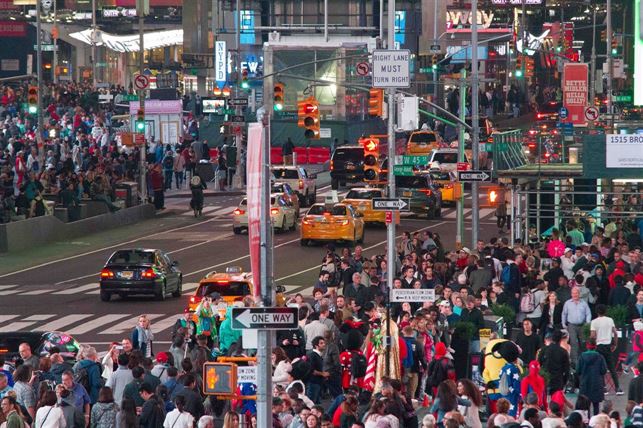
Population density is the number of people per square kilometre (km2) of land area. Various factors affect the density of a population on a particular area.
Factors Affecting Sparse & Dense Population
Physical Factors
Climate plays a pivotal role in population densities. Areas with optimum rains are more favourable to inhabit than arid regions. People can easily grow and harvest their crops, rear their livestock & have access to drinking water.
As such these areas tend to be highly populated whereas arid regions will be sparsely populated. Many people flee from these dry regions looking for rainy and wetter ones.
The migrants in the Sahara are mostly populated around wet areas such as an oasis. Most Swedes inhabit the southern part of the country due to bone chilling weather in the north (Scandinavia). The North Eastern side of Russia has a very low population density due to cold weather. The same can be seen in Greenland and North Canada.
Relief
Rugged and mountainous terrains are difficult to inhabit because of poor accessibility whereas undulating terrains are easily navigable, settle or grow crops on.
Moreover, Highland areas are mostly populated compared to low lying area. Highlands, e.g the Eastern highlands of Zimbabwe receive high rainfalls than low lying areas, e.g the South East lowveld of Zimbabwe is usually hotter.
As such, people tend to inhabit these areas as water will be adequately available. In addition, low lying areas are more prone to insects such as tsetse flies and mosquitos which can cause sleeping sicknesses or malaria respectively.
Vegetation
Moderately vegetated areas tend to have high population densities despite other underlying problems such as inaccessibility. Vegetated areas tend to provide wood resources which can be used as building materials, firewood and much more.
In addition, vegetation will be used as food for livestock and also humans. On the other hand, sparsely vegetated areas such as deserts and highly vegetated areas such as the tropics tend to have low populations. However, other populations have adapted to densely vegetated areas such as in the Amazon rainforest.
Soils
Fertile soils and land attracts a lot of people as crops and livestock greatly thrives. Regions with poor soils such as the polars and hot deserts are unfavourable for agriculture. Desert soils will be highly baked and compacted reducing plant growth whilst ice covered surfaces provides an impermeable layer for water to infiltrate down.
In addition, most tropical rainforests tend to have highly iron leached soils (laterite) which are poor for agriculture.
Areas around deltas, e.g. the Ganges in Bangladesh and floodplains tend to be highly populated due to fertile alluvium soils.
Geology
Areas considered as risky, e.g. near volcanoes or floodplains or unsuitable to inhabit are often crowded. This is true in most LEDCs as these areas provides fertile soils rich in mineral nutrient.
However, depending on the level of development these areas are usually left uninhabited, for example Pompeii, Italy was left due to Mt Vesuvius eruption
Economic factors
Business activity
The main reason why the population density is so high in urban areas is the availability of jobs and services which pulls in foreign people, especially rural ones, into these areas. Examples of crowded and busiest cities in the world include :
- New Delhi, India
- New York, USA
- Tokyo, Japan
- Hong Kong, China
Areas with low business activities are less populated and may turn into ghost towns, for example Fordlandia, Brazil & Hashima Island, Japan was once a mining region which is now uninhabited .
10 famous ghost towns in the world
Infrastructure
Areas with well constructed and connected road networks tend to attract a lot of people increasing the population density e.g. Suribton, SW London population increased from 141 000 to 160 000.
Social factors
Endemics
Pest and disease infested areas such as swamps and low lying basins tend to breed mosquitoes and tsetse flies, as such people flee and less populate these areas.
Migration
Migration is one of the leading factors increasing population densities. For example, Mexico to USA, N. African natives to Europe, Nepal to India. Rural to urban intra-movements, for example Rural Indians to New Delhi, rural Chinese dweller to Hong-kong.
Poverty
Lack of money to afford better housing often crowd people in undesirable areas increasing the population density e.g. the mountain favelas of Brazil, and the slums of Delhi and Calcutta.
Political Factors
Wars, terrorism and disputes may push away people from certain areas reducing the population density but increases in the receiving area where the migrants migrate into. For example, North African Muslim migrating to European countries.
